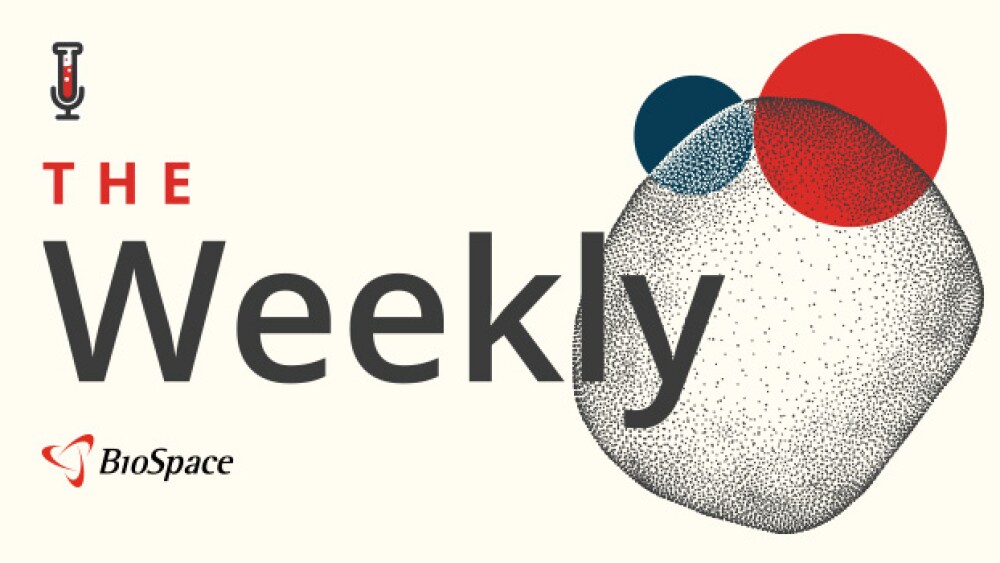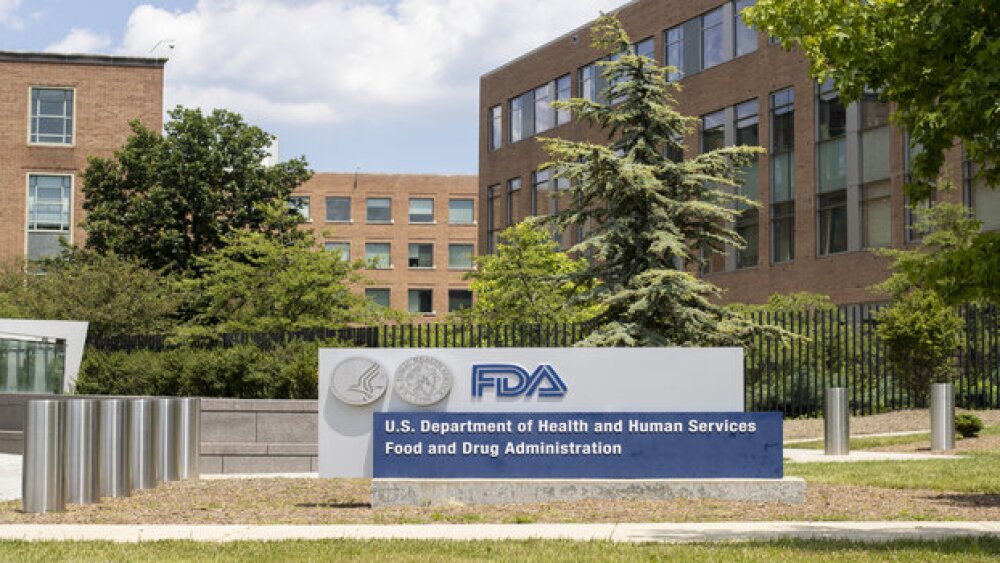Gene therapies have ridden investor mania to huge valuations but commercialization challenges have pushed market caps to the floor. At a roundtable last week, FDA leaders promised faster approvals and broad support to the industry.
Following comments from FDA Commissioner Marty Makary and Center for Biologics Evaluation and Research Director Vinay Prasad signaling their support for rare diseases, the regulator hosted a roundtable last week to discuss the state of cell and gene therapies—still relatively young modalities often targeting rare indications. As the healthcare administors listened to feedback from the industry, they promised to help the technology reach its full potential.
“We’re going to do everything in our power to sweep away the barriers from you getting those solutions to market and getting them funded and do everything that we can to support you,” Health and Human Services Secretary Robert F. Kennedy Jr. said at the event. This comes after Makary said in April that the agency would roll out a type of conditionalapproval pathway for therapies based on a “plausible scientific mechanism” for rare, incurable conditions.
It also comes at a much-needed time. The gene therapy space, in particular, has seen one hit after another in recent months and faces commercialization challenges highlighted by bluebird bio’s go-private deal earlier this year. Combined with a patient death tied Sarepta’s Duchenne muscular dystrophy gene therapy Elevidys in March, the departure of gene therapy’s regulatory champion Peter Marks and other macro headwinds, the sector is keen to see the tides turn.
“Right now we’re in a cold winter,” Seth Ettenberg, CEO of Bayer cell therapy subsidiary BlueRock Therapeutics, told BioSpace. “Interest rates are up, companies are doing add-ons, valuations are coming down as we speak.”
But inside industry there’s hope that summer will come sooner rather than later—and last week’s roundtable disussion appeared to analysts to be a net positive for the space, including such companies as Vertex, uniQure and Denali.
“The FDA Cell and Gene Therapy Roundtable was bullish for the space, particularly for those focused on rare disease, in our view,” Stifel wrote in a note to investors on June 5.
Bluebird Bought
In February 2025, investment firms Carlyle and SK Capital Partners made a buyout offer to bluebird bio for a scant $30 million. Though the number has crept up to $48.9 million in a new deal, the whole ordeal came as a shock to the industry, given that the company was once worth two orders of magnitude more, valued at $11.5 billion in March 2018.
With their purchase, bluebird’s new owners will get a handful of cutting-edge gene therapies with valuable FDA approvals for sickle cell disease, β-thalassemia and cerebral adrenoleukodystrophy. But even with those marketed treatments, the biotech couldn’t bridge the cash gap that loomed large late last year.
Bluebird is not alone in its struggle. At a glance, the valuations of almost all high-profile gene therapy companies over the last five years have gone from the atmosphere to the dirt. The medical value of gene therapies continues to be obvious—look no further than last month’s news of baby KJ’s personalized CRISPR treatment—but the business value faces serious challenges.
Investments in cell and gene therapy (CGT) have been similarly challenged. Prior to the COVID-19 pandemic, investment in the space was consistently in the double-digit billions, thanks in large part to clinical trial results out of Ohio State University.
In November 2017, pediatrics professor Brian Kaspar and AveXis published the results of a Phase I trial of 15 infants with spinal muscular atrophy type 1. A devastating disease, patients often do not survive past the age of two; without ventilatory support, 92% of patients died by 20 months of age. In the trial, however, every single patient was still alive at 20 months.
“That was the moment where people said, ‘Oh my god, gene therapy is actually working, and working in a monumental way,’” Graig Suvannavejh, managing director at Mizuho Securities, told BioSpace.
The reward for AveXis was immediate. The following year, Novartis bought AveXis for a bellowing $8.7 billion, a 72% premium over the biotech’strading price and a valuation based entirely on the promise of that Phase I trial, according to Suvannavejh. AveXis’ treatment, onasemnogene abeparvovec, was approved in 2019 and is now sold by Novartis under the brand name Zolgensma.
“At that moment, everyone said, ‘I’m starting a gene therapy company,’” Suvannavejh said. “The business model seemed like just you run one trial and get bought for $9 billion.”
Indeed, investment jumped a massive 512% the very next year and maintained similarly high levels until it doubled in 2021 during the biotech boom of the pandemic. But like all areas of biopharma, CGT felt the bubble burst. And in gene therapy specifically, investor nervousness pervades the conversation—especially amid the fallout of bluebird and other examples of commercialization challenges of successful therapies.
Baked In Problems
Some of the difficulty in getting the CGT space off the ground is baked into the types of diseases most treatments are currently targeting.
“Gene therapies are often difficult case studies,” BlueRock’s Ettenberg said. “They have large price points and small patient populations.” The incidence for many diseases targeted by CGT puts them squarely in the rare diseases category. Spinal muscular atrophy occurs in about one of every 10,000–20,000 births. Beta-thalassemia, which bluebird’s beti-cel therapy treats, occurs in about 1.5 of every 100,000 births.
Contrast those numbers with the cost of developing these therapies and the challenging economics of the space become clear. One recent analysis put the cost of developing a new cell or gene therapy at about $2 billion , which significantly outstrips the average cost of developing any new drug, which ranges from $100 million to $800 million.
“What we’re coming to recognize is that the initial capital to get through preclinical and manufacturing is larger than other modalities,” Ettenberg said.
Given the high investment and often small patient populations, it’s no surprise that many gene therapies have exorbinate price tags. Bluebird’s beti-cel, for instance, costs $2.8 million for one dose. And that’s not even the most expensive treatment. Orchard Therapeutics’ Lenmeldy for pediatric metachromatic leukodystrophy costs a whopping $4.25 million, while Sarepta’sElevidys costs $3.2 million. New regulatory action could help here. Analysts at Stifel noted that last week’s CGT roundtable included “plans to incentivize the reimbursement of CGT products.” These potentially include novel, innovative payment models, the group continued, “which HHS views as ROI-positive from a healthcare net-spend perspective.”
Outside of rare diseases, those in the field look for gene therapies to break into more common disease spaces, bringing more money into the space and potentially bringing down costs across the board as the field’s infrastructure improves, knowledge of how to manufacture these therapies becomes more widespread and the treatments themselves become more common.
“My hope is that gene therapy makes inroads in oncology,” Omar Dabbous, former vice president at Novartis Gene Therapies, told BioSpace, adding that “advances in the science in oncology translates into benefits.”
The FDA’s roundtable discussion has further buoyed the sector’s spirits. “The comments from the FDA leadership are very encouraging,” Beam Therapeutics CEO John Evans told BioSpace in an email. “Accelerating cures for serious diseases is a compelling area for FDA to focus on, and they can play a pivotal leadership role in advancing some of these policy changes.”
Stephen Majors, the vice president for global communications at the Alliance for Regenerative Medicine (ARM), a cell and gene therapy advocacy group, agreed in an interview with BioSpace. “We don’t recall a time where there was this level of alignment among the highest levels of government around the promise of CGT. Stakeholders, including investors, are taking notice.”






